Peace in Chaos: A Spatial Audio Composition
A Composition
The MCT4044 course happened right in the middle of an increasing lockdown of the society due to the corona virus pandemic, and just the day before the workshop weeks began, the whole structure of the course was turned upside down. We were not supposed to be in the portal, then we were supposed to, but in smaller groups, and the requirements and due dates of the assignments were changed. In the middle of all of this we were supposed to collaborate on a huge spatial audio composition, putting our hands on the recording equipment (“but is it safe to touch it?”), but also follow the intensive workshop that really was a handful for some of us (4-5 hours in front of your laptop screen everyday), and learn how to use the DAW Reaper (the challenge occurs when you only have one screen on your laptop and you try to follow a course on Zoom, try it!).. To some of us, the whole situation was severely chaotic and confusing, and when some of us got sick (“This must be corona!”) on top of all of this: it wasn’t really making things easier.
So the main theme behind our composition was inspired by this stressful situation, and we decided that we wanted to explore the search for “peace and calmness in a chaotic world”.
Listen to our track
Beginning with Thomas
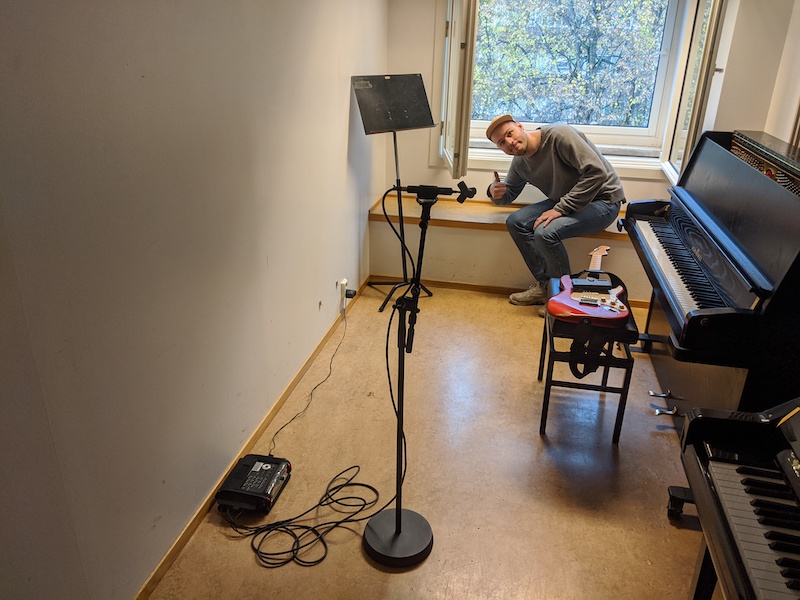
My piece was done by doing recordings with the Soundfield SPS200 microphone in six different locations. Two indoors and four outdoors. Due to bad weather and lack of time the recordings where done around campus on Blindern. As a consequence of this the transitions between the different scenes are very subtle. In addition to the Soundfield recordings some of the guitar was recorded with an AKG-C414 microphone inside the Portal. The piece mainly consists of self-recorded material but contains some samples gathered from BBCs´incredible sound effect library.
Concept
In line with our overarching concept and dramaturgy this part can by seen as an exploration of the concept of calmness from an introspective point of view. What are my own associations to the word and how do you capture and convey it in a convincing manner? Throughout the piece there is a sense of tension and inner turmoil portrayed by a static noise fading in and out. Repetition and cyclic motion is also a central part both in the musical and spatial output.
Aesthetic and technical choices
There are two main “attractions” throughout the piece. It´s a voice and a guitar. For the first part of the composition you can hear the guitar through the Soundfield microphone staying quietly in the background, but as the piece progress it fades in to the recording from the AKG. The AKG-recording has been treated with a RoomEncoder with automation lines that moves the sound around the listener. In addition to this there is also an mcfx convolver with an IR from a hall to make the source a bit more ambiguous. Which according to Barry Blesser could portray increased anxiety since it give an inability to localize the sound.
Since most of the recordings were done on the Soundfield microphone the spatialization on those comes from the placement of the mic´s and some rotation to the recordings. The technical execution choices made are quite banal and straight-forward. Due to sickness during the process I only had one day to record and edit the composition. I would have liked to go deeper into the mixing stage and manipulation of sounds but there wasn´t time to that in this instance. So therefore this composition is more about the conceptual musical ideas rather than the spatial audio aspects.
Final thoughts
The technical parts of this course would of course be interesting to explore further. Investigate spatialization techniques on a deeper level. Working only with ambisonic microphone recordings is also a challenge in itself. It takes time to find interesting places to record and in this project that wasn´t possible for me. As a personal reflection on the topic of spatial audio in a musical context I guess that for me the interesting part of music is what the sound is, and not where a sound is placed in a virtual space or how it moves through space. So in hindsight if I were to do this again I wouldn´t have cared about trying to make some “music” and instead just record some interesting soundscapes and find some godd samples I could manipulate.
An interlude by Jackson
Beginning with the sound of a backpack unzipping, my section collects a number of ambisonic recordings with the Soundfield microphone and a trio of AKG mics. My piece features a series of transitions that are centered around the theme of the cinematic use of space, a concept that takes a filmatic approach to sound recording and composition (Roads, 2015). These transitions would often be impossible in reality and provoke confusion and resolve quite quickly from one moment to the next.
The sections of this piece are as follows:
- A backpack unzipping
- Elevator arriving
- Drumsticks tapping across a room (inside a metal mug)
- A drawer opening
- Thomas playing guitar (with convolution)
- The high end of many plastic bags
- Footsteps ascending and descending a spiral staircase
- An elevator rising and opening
Here are some images of the various locations recorded:
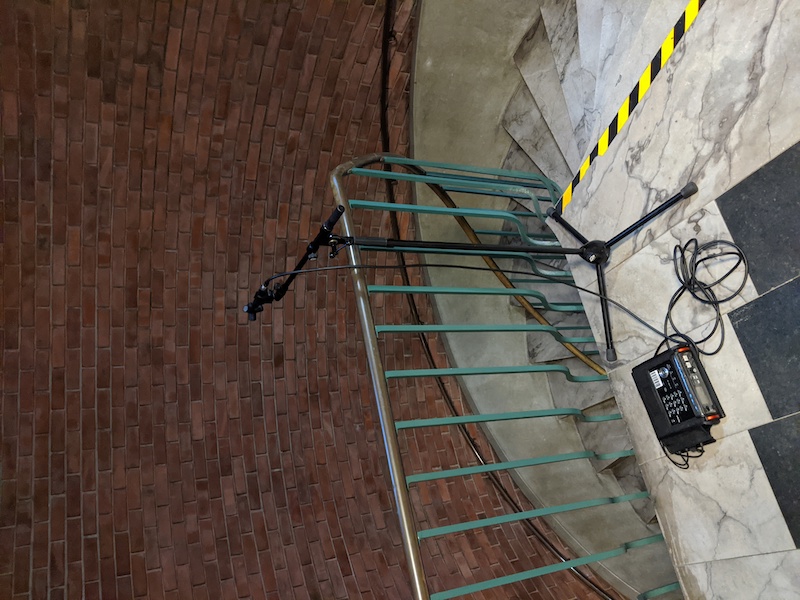
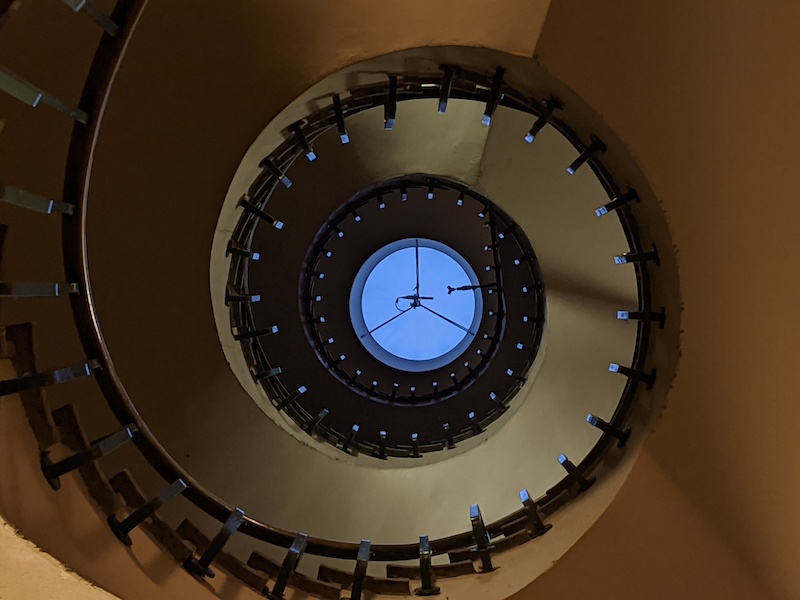

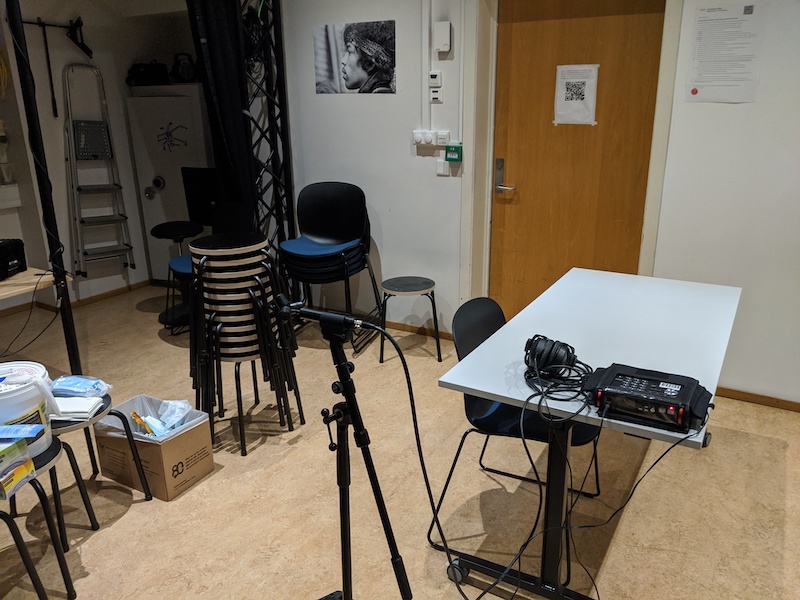
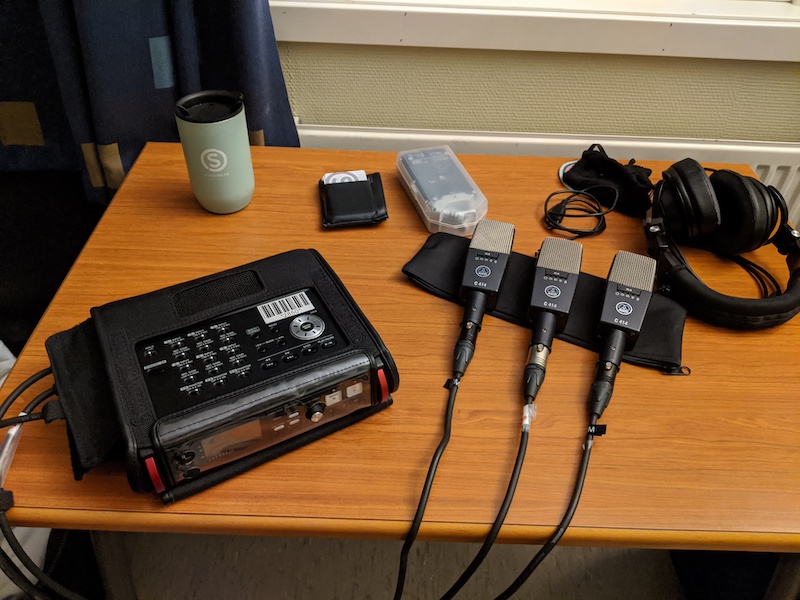
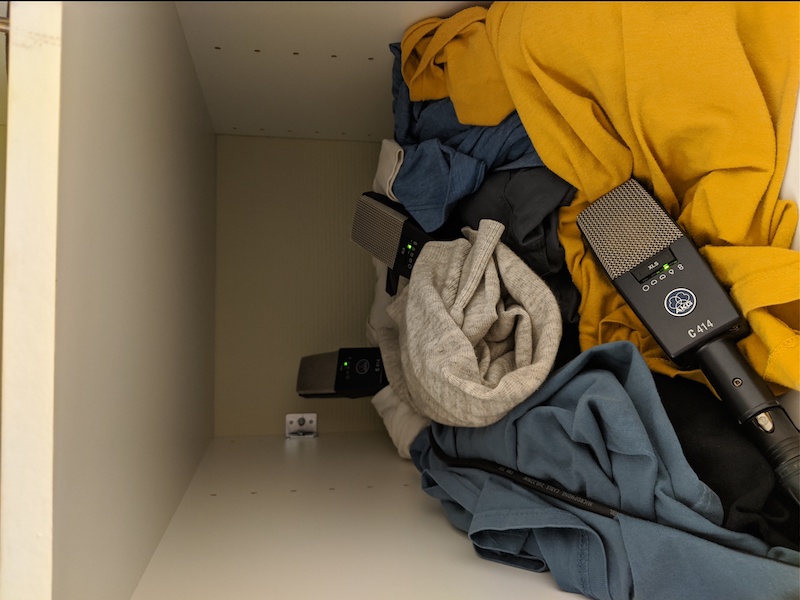
Working with three microphones instead of one allowed the sounds to become actual images (as opposed to single point mono sources). This provided a wonderful sense of depth when the three mono tracks were encoded into ambisonic space. Automating the movement of a group of these sounds created very dense, dynamic spaces like being inside a drawer as it’s opening or the eerie high end of plastic bags as they shift around one’s head. I was also lucky to have Thomas play a short melody for me that served as a great piece to test out matrix convolution using an impulse response from the building in which we have our classes. Recording Thomas’s guitar with three mics meant convolving each of those channels with the four channels recorded from the Soundfield mic. Those my impulse response was a simple clap, the end result nicely blended into the layered recordings of me running up and down the stairs.
Though an explanation of every transformation would take too long for this post, many screenshots of the Reaper session can be seen in our presentation listed below.
Mari concludes
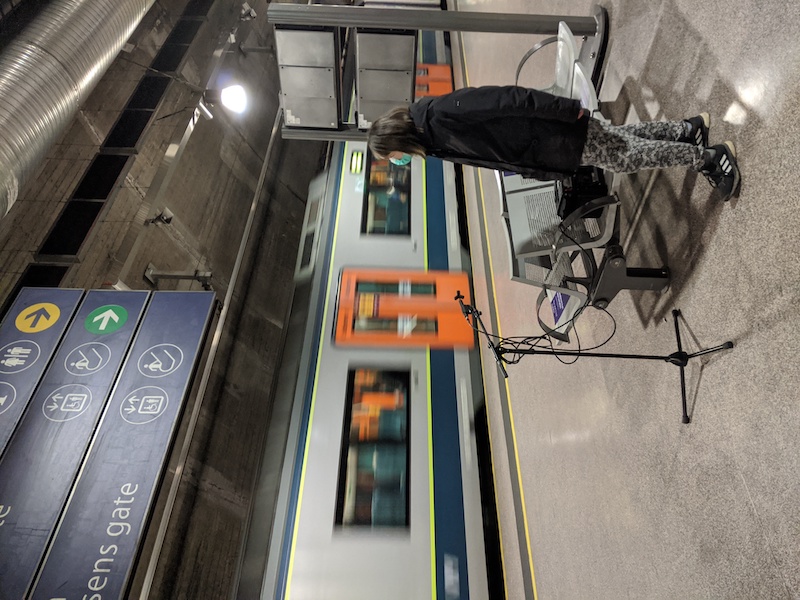
My part of the composition is a mix of ambisonic recordings that were done in Nationaltheatret Train Station together with Jackson. In the west entrance of Nationaltheatret train station, there is an acoustic sculpture. Some special kind of architecture in this room is creating a special “flutter” effect, and the reverberation time is remarkably long.
 “The acoustic sculpture”)
Most of the recordings were done in this room, in addition to one recording at the train platform. The scene is starting with an announcement that was spoken from the speakers: “Take cautions because of the coronavirus, keep distance, and wear a face mask”. This announcement is kind of setting the mood for the whole scene; we’re in the middle of a chaotic virus apocalypse, it reminds us that it is not really safe to be out here these days. Then the staccato, mechanical beat slowly comes in, and an upgoing pitch resembles an engine that is starting up. The train is moving towards you , and the listener gets the feeling of being run down by the train. The train is then taking you on a meditative journey, with angelic voicing that appears as a contrast to the mechanic beat in the background.
“The acoustic sculpture”)
Most of the recordings were done in this room, in addition to one recording at the train platform. The scene is starting with an announcement that was spoken from the speakers: “Take cautions because of the coronavirus, keep distance, and wear a face mask”. This announcement is kind of setting the mood for the whole scene; we’re in the middle of a chaotic virus apocalypse, it reminds us that it is not really safe to be out here these days. Then the staccato, mechanical beat slowly comes in, and an upgoing pitch resembles an engine that is starting up. The train is moving towards you , and the listener gets the feeling of being run down by the train. The train is then taking you on a meditative journey, with angelic voicing that appears as a contrast to the mechanic beat in the background.
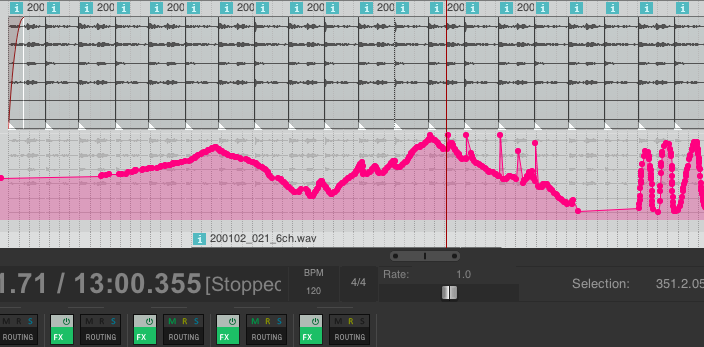 “Pitch automation in Reaper is converting the four channel ambisonics down to stereo format, and is not recommended if you want to keep the multi channel surround sound.”)
“Pitch automation in Reaper is converting the four channel ambisonics down to stereo format, and is not recommended if you want to keep the multi channel surround sound.”)
In reflection
Of course Corona restrictions were the major limitations in our collaboration. And even with brief sickness in the group, we were able to persevere and create something pretty interesting and quite abstract. Working with ambisonics was certainly a learning experience in itself. It’s one thing to learn about the theory behind spatial audio and another to work with recordings and encoded samples. This was compounded by the fact that this was the first time that many of us were working with Reaper. Reaper, while being a fantastic tool that appears to be able to do just about anything in sound, is a bit clunky and obtuse to work with. With all of the sounds we were manipulating, the plugins we employed had to support multichannel processing (as to not disrupt the ambisonic encodings) which further restricted our post-production abilities. Routing was quite a mess as well (working with 16+ channels per track!) but enforced a clear understanding of the processing sequence.
